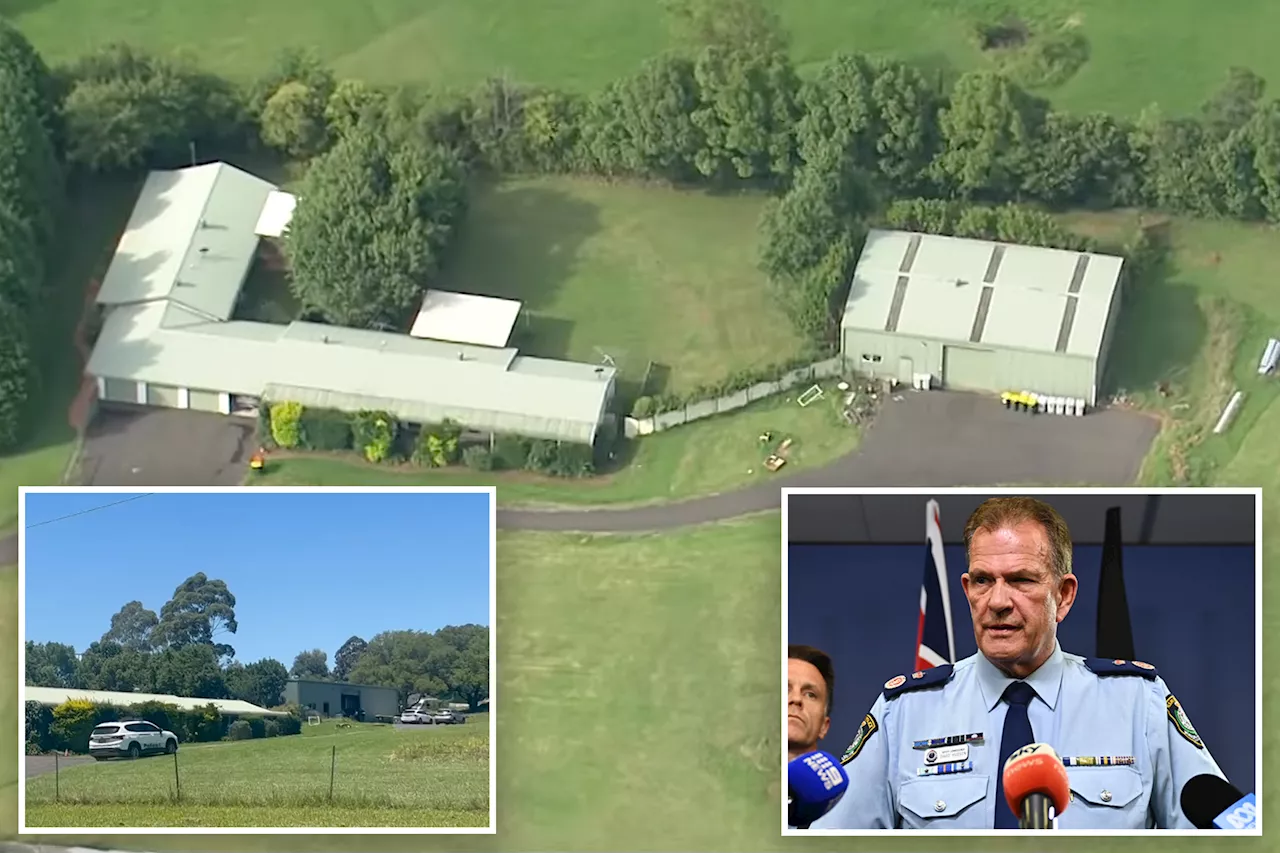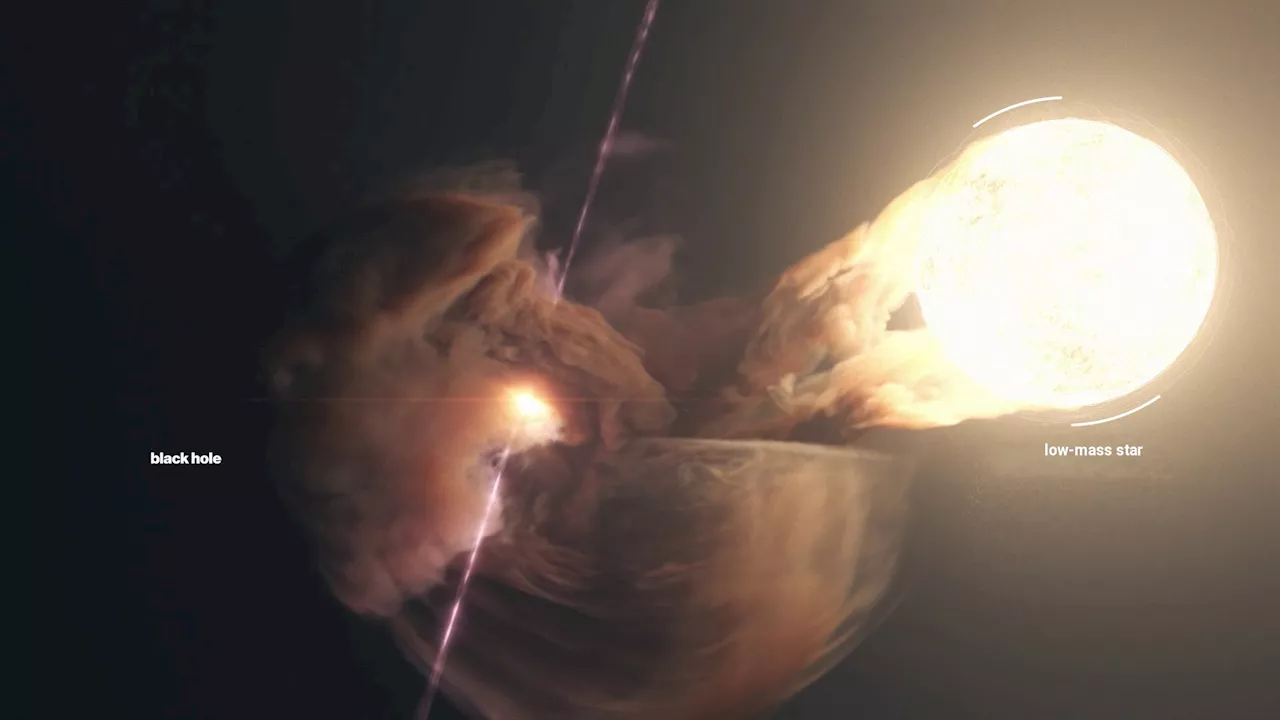A new study suggests that low-mass microquasars, stellar-mass black holes with companion stars, may be contributing to the high-energy cosmic rays detected on Earth.
The Earth is bathed in a constant stream of high-energy particles known as cosmic rays. Most of these particles originate from outside our solar system, and while our atmosphere effectively shields us from significant harm, they can impact Earth's surface with enough energy to create showers of lower-energy particles. This shower effect is how we primarily detect cosmic rays.
Despite our knowledge of cosmic rays, the exact mechanisms responsible for accelerating them to such incredible speeds remain somewhat of a mystery. While certain phenomena like nearby supernovae can generate lower-energy cosmic rays, the origins of the highest-energy cosmic rays are less clear.One known source of these high-energy cosmic rays is quasars. These distant, incredibly luminous objects are powered by supermassive black holes at the centers of galaxies. These black holes can unleash powerful jets of relativistic particles that, even across billions of light-years, can reach Earth with immense energy. However, the number of particles emitted by quasars alone isn't enough to account for the vast number of cosmic rays we observe. This suggests that there must be other, yet unidentified, sources contributing to this cosmic radiation. Enter microquasars, celestial objects that resemble miniature versions of quasars. While quasars are powered by supermassive black holes in distant galaxies, microquasars are fueled by stellar-mass black holes within our own galaxy. Despite their smaller size, they share striking similarities with their larger counterparts, featuring an accretion disk of material swirling around them and powerful jets emanating from their poles. Astronomers study microquasars to better understand the evolution of quasars. Unlike regular quasars that draw material from their surrounding galaxies, microquasars require a companion star to provide the necessary fuel. The energy output of a microquasar depends on the mass of its companion star. High-mass microquasars, with companions several times the mass of our Sun, can produce copious amounts of energy, while low-mass microquasars, with smaller companion stars, tend to be less energetic.One of the most energetic microquasars known is SS 433, boasting a companion star ten times the mass of our Sun. Due to the rarity of high-mass stars compared to low-mass stars, high-mass microquasars are significantly less common than their low-mass counterparts. This means that even though high-mass microquasars are powerful cosmic ray producers, their scarcity doesn't fully account for the number of cosmic rays we detect on Earth. However, recent research suggests that low-mass microquasars could also contribute to the cosmic ray population. A study focused on GRS 1915+105, a microquasar with a companion star less massive than our Sun, revealed a source of gamma rays emanating from its location. This faint gamma-ray source was confirmed using 16 years of accumulated data from the Fermi satellite. Some of these gamma rays possessed energies exceeding 10 GeV, indicating significant power. The researchers theorize that these gamma rays are generated when protons accelerated by the microquasar's jets collide with interstellar gas, producing high-energy photons. For this process to occur, the protons within the microquasar's jets must possess energies exceeding 10 GeV, placing them within the realm of high-energy cosmic rays. While this study demonstrates that even low-mass microquasars can produce high-energy cosmic rays, it doesn't definitively solve the mystery of their origin.Further research is needed to determine why some microquasars are exceptionally energetic while others remain relatively subdued.
COSMIC RAYS MICROQUASARS BLACK HOLES GAMMA RAYS ASTROPHYSICS
United States Latest News, United States Headlines
Similar News:You can also read news stories similar to this one that we have collected from other news sources.
 Low-Mass Microquasars Found to be Efficient Particle AcceleratorsFor the first time, researchers have found evidence that even microquasars containing a low-mass star can accelerate particles efficiently. This discovery, based on 16 years of data from NASA's Fermi satellite, has significant implications for our understanding of the abundance of gamma rays in the universe.
Low-Mass Microquasars Found to be Efficient Particle AcceleratorsFor the first time, researchers have found evidence that even microquasars containing a low-mass star can accelerate particles efficiently. This discovery, based on 16 years of data from NASA's Fermi satellite, has significant implications for our understanding of the abundance of gamma rays in the universe.
Read more »
 San Diego Braces for Potential Mass Deportations as Trump Returns to PowerRecent enforcement operations in Bakersfield have sparked fear and protests in San Diego. Community members and experts warn that mass deportations could significantly impact San Diego's economy, especially its tourism industry, which relies heavily on undocumented workers.
San Diego Braces for Potential Mass Deportations as Trump Returns to PowerRecent enforcement operations in Bakersfield have sparked fear and protests in San Diego. Community members and experts warn that mass deportations could significantly impact San Diego's economy, especially its tourism industry, which relies heavily on undocumented workers.
Read more »
 Tijuana Braces for Potential Mass Deportations Under TrumpAs President Donald Trump prepares for his second term, concerns are mounting over his campaign pledge to carry out mass deportations. Tijuana, Mexico, a city bordering San Diego, is particularly vulnerable to this influx. Father Pat Murphy, director of the Casa Del Migrante shelter in Tijuana, warns that the city lacks the resources and coordination to handle a surge of deportees. The text delves into the challenges faced by Tijuana, highlighting the lack of government support for migrant shelters and the psychological toll deportation takes on individuals separated from their families and former lives.
Tijuana Braces for Potential Mass Deportations Under TrumpAs President Donald Trump prepares for his second term, concerns are mounting over his campaign pledge to carry out mass deportations. Tijuana, Mexico, a city bordering San Diego, is particularly vulnerable to this influx. Father Pat Murphy, director of the Casa Del Migrante shelter in Tijuana, warns that the city lacks the resources and coordination to handle a surge of deportees. The text delves into the challenges faced by Tijuana, highlighting the lack of government support for migrant shelters and the psychological toll deportation takes on individuals separated from their families and former lives.
Read more »
 School Districts Prepare for Potential Mass DeportationsThis news article discusses the impact of President Trump's immigration policies on school districts and students. It highlights the concerns of educators and students, particularly those from mixed-status families, and the efforts being made to support them.
School Districts Prepare for Potential Mass DeportationsThis news article discusses the impact of President Trump's immigration policies on school districts and students. It highlights the concerns of educators and students, particularly those from mixed-status families, and the efforts being made to support them.
Read more »
 Potential Trump mass deportations could have 'devastating impact' on NYC, financial experts say |Potential mass deportations of undocumented individuals could ripple through New York City's economy if Donald Trump carries out his presidential campaign
Potential Trump mass deportations could have 'devastating impact' on NYC, financial experts say |Potential mass deportations of undocumented individuals could ripple through New York City's economy if Donald Trump carries out his presidential campaign
Read more »
 Trailer found packed with explosives ready for 'antisemitic attack' in Australia: 'Potential mass casualty event'Terror attack foiled after police in Sydney uncover caravan packed with explosives intended to blow up synagogue
Trailer found packed with explosives ready for 'antisemitic attack' in Australia: 'Potential mass casualty event'Terror attack foiled after police in Sydney uncover caravan packed with explosives intended to blow up synagogue
Read more »
